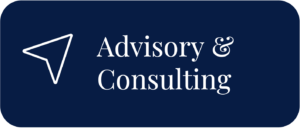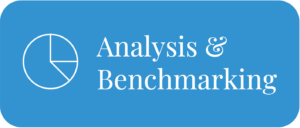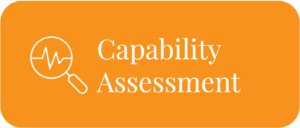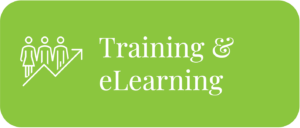In today’s rapidly evolving business landscape, the role of a Strategic Procurement Consultant has never been more crucial. Organizations are increasingly turning to these experts to optimize their supply chains, drive innovation, and reduce costs—all while aligning procurement strategies with broader business goals. But what does this role actually entail on a day-to-day basis?
In this two-part series, we’re taking you inside the world of Strategic Procurement Consulting. Whether you’re considering a career in this dynamic field or looking to understand how a procurement consultant can add value to your organization, this guide will offer you a comprehensive glimpse into the profession. From the essential skills required to succeed, to the everyday challenges and triumphs, we’ll explore what it truly means to be a Strategic Procurement Consultant.
In Part 1, we’ll dive into the daily responsibilities, key client interactions, and the unique challenges that define this role. By the end, you’ll have a clear picture of what it takes to thrive in this fast-paced and impact-driven profession.
So, let’s begin by focusing on the cornerstone of any successful consulting relationship: the client.
As a Management Consultant specialising in Strategic Procurement, your success hinges on effective interactions with both clients and your internal team. These interactions are diverse, challenging, and often the most rewarding part of the job. Let’s explore the key aspects of these relationships:
Client Interactions: Building Trust and Delivering Value
Effective client interactions are at the core of your role as a Management Consultant. These engagements can make or break your reputation, so it’s important to approach them with precision and confidence.
Imagine walking into a client’s office for the first time, greeted by a team that’s clearly skeptical of outside consultants. The company had been struggling with procurement inefficiencies for years, and you could sense the frustration in the room. As you began the discovery phase, asking probing questions and listening intently, the real issues started to emerge—not just the surface-level problems they initially mentioned, but deeper, systemic challenges that had been overlooked. Through careful questioning and genuine engagement, you earned their trust, setting the stage for a successful partnership that ultimately transformed their procurement processes.
Discovery and Needs Assessment
Style required: Consultative and investigative, often involving in-person meetings or workshops.
Your first task is to truly understand the client’s challenges. This phase involves diving deep into their operations to uncover the root causes of procurement inefficiencies. It’s not just about surface-level problems; often, the real issues lie beneath what’s said in initial meetings. The key here is to ask the right questions and, just as importantly, listen carefully.
Sometimes, it’s beneficial to run workshops to engage different stakeholders. By encouraging collaboration and brainstorming, you’ll often discover the deeper insights that fuel effective procurement strategies.
Strategic Presentations
Style required: Persuasive and data-driven, requiring strong communication skills to articulate value propositions.
After your investigation, the next step is presenting your findings and recommendations to senior stakeholders. This isn’t just about delivering data; it’s about crafting a compelling narrative that illustrates the potential impact of your proposed changes. Executives need to see the strategic value in your recommendations, and it’s your job to paint a clear picture of how these changes will improve their procurement outcomes.
Use data to support your insights, but don’t overwhelm your audience. Instead, balance the technical details with a forward-looking vision that helps them understand how implementing your strategies will translate into measurable business benefits.
Implementation Support
Style required: Supportive and practical, focusing on real-world application of strategies.
Once your recommendations are approved, it’s time to turn strategy into action. This stage requires hands-on support, guiding the client’s team through the complexities of implementing new processes or systems. You’ll run training sessions, troubleshoot challenges, and ensure that the transition to new procurement practices is smooth.
Your focus here is on making the changes practical and achievable. By staying engaged and accessible, you help clients gain confidence in the new systems, ensuring the strategic plan translates successfully into day-to-day operations.
Performance Reviews
Style required: Analytical and partnership-oriented, emphasising ongoing value creation.
Post-implementation, your role shifts to ensuring the strategy is delivering the expected results. You’ll be monitoring KPIs, supplier performance, and cost savings, regularly reporting back to the client with insights on what’s working and where adjustments may be needed. This phase is less about producing data and more about fostering a partnership where you work collaboratively to refine the approach and continuously improve outcomes.
Stakeholder Management
Style required: Diplomatic and integrative, requiring emotional intelligence to navigate diverse perspectives.
Strategic procurement projects often involve many stakeholders across various departments, each with their own priorities and concerns. Your job is to bring everyone together to support a unified procurement strategy. This requires balancing differing agendas and building consensus.
Effective stakeholder management relies on understanding the needs and motivations of each party. It’s about fostering dialogue, ensuring that all voices are heard, and navigating any resistance with diplomacy and tact. By maintaining open communication and a collaborative approach, you’ll align stakeholders around common goals, paving the way for smoother project execution.
The ability to seamlessly transition between these varied interactions is what sets apart successful Management Consultants in Strategic Procurement. It requires a unique blend of procurement expertise, business acumen, leadership skills, and emotional intelligence.
With clients, you’re the trusted advisor, translating procurement knowledge into tangible business value. With your team, you’re the leader and mentor, driving project success while nurturing the next generation of consulting talent.
While interactions with clients and teams shape the success of a project, it’s the consultant’s daily routine that keeps everything moving smoothly. Let’s take a look at what a typical day might look like for a mid-career consultant in strategic procurement.
A Day in the Life of a Mid-Career Management Consultant
As a mid-career management consultant specialising in strategic procurement, your days are dynamic, challenging, and vary depending on client needs. Whether you’re with a strategy firm or a consulting firm, your day often revolves around optimising procurement processes, working closely with procurement teams, and engaging with various stakeholders across the supply chain. Let’s walk through a typical day:
Early Morning (7:00 AM – 9:00 AM)
Your day begins early, typically around 7 or 8 AM. The first task is catching up on emails and industry news relevant to your procurement projects. This could include monitoring commodity prices, tracking geopolitical developments that might affect supply chains, or reviewing reports on supplier performance. Given that you’re likely handling multiple clients and projects, staying informed is crucial.
You might spend this time preparing for a strategic meeting with C-suite executives to discuss procurement transformation initiatives, such as supplier consolidation or cost optimisation strategies across key categories. Or perhaps your morning preparation might involve reviewing the progress of a technology implementation aimed at automating procurement workflows or analysing data for a supplier performance review.
Mid-Morning (9:00 AM – 12:00 PM)
This period is typically packed with meetings—both internal team check-ins and client engagements.
Internal Meetings: As a mid-career consultant, you’re likely leading teams of junior consultants and analysts. These meetings involve guiding your team through complex procurement analyses, reviewing category strategies, and ensuring that everyone is aligned with the project’s goals. You’ll also review their work on spend analysis and supplier performance evaluations to ensure high-quality deliverables.
Client Interactions: If you’re with a strategy firm, these meetings might focus on long-term procurement strategy development—such as designing category management plans, identifying sourcing opportunities, or negotiating high-value contracts. For consultants at Big 5 firms, your focus could be more operational—running workshops with client procurement teams, optimising day-to-day purchasing activities, or ensuring that new procurement technologies are being properly integrated across the organisation.
Regardless of the firm type, your role involves refining procurement recommendations, ensuring alignment with the broader business objectives, and preparing presentations for senior executives, often showcasing how strategic procurement improvements can drive cost savings and supply chain resilience.
Lunch (12:00 PM – 1:00 PM)
Lunch is often more than just a break—it’s a valuable time for networking and relationship management.
Client Lunches: You might have a working lunch with clients where discussions revolve around procurement challenges, emerging trends in the industry (like sustainability or ethical sourcing), or upcoming projects. This is also a prime opportunity to strengthen relationships and ensure you’re tuned into the client’s evolving needs.
Internal Team Lunches: You could also use this time for informal mentoring of junior staff, providing them with insights into how procurement strategies translate into real-world business value, and helping them navigate the challenges of working in a high-pressure consulting environment.
Afternoon (1:00 PM – 5:00 PM)
Afternoons are when you drive project progress and dive deep into procurement-specific work.
You may be focused on presenting key findings to a client’s executive team, such as the results of a recent procurement audit or a strategic sourcing initiative. You might also work on developing long-term procurement recommendations, such as how to redesign supplier networks or reduce risk across the supply chain through diversification.
You could also be focussed on ensuring that procurement process improvements are implemented smoothly. This could involve managing cross-functional teams to ensure that procurement software is properly configured or helping the client’s procurement team adopt more efficient purchasing practices. You may also be responsible for creating detailed reports on procurement KPIs, supplier risk assessments, or compliance with industry regulations.
Late Afternoon (5:00 PM – 7:00 PM)
As the day winds down, your focus shifts towards business development, client follow-ups, and future planning.
You might spend this time preparing proposals for new procurement projects or engaging with potential clients to discuss how strategic procurement can drive efficiencies in their supply chains. If you’re working with senior partners, you’ll be discussing how to deepen relationships with existing clients by offering additional procurement services, such as supply chain risk management or sustainability initiatives.
You may also use this time to present ongoing project outcomes to senior client stakeholders, review procurement performance metrics, or provide feedback on how well newly implemented procurement technologies are performing.
Evening (7:00 PM onwards)
Work often continues into the evening, especially if you’re managing complex procurement projects with tight deadlines.
You’ll likely finish the day by sending out follow-up emails, finalising client deliverables, and prepping for the next day’s meetings. If you’re preparing for a major presentation or strategic workshop, your evening might involve refining your presentation materials or doing a final review of supplier performance data.
Dinner could be an opportunity for informal client networking or internal team bonding. Depending on the project, you might also find yourself traveling or staying overnight at a client site, particularly if you’re involved in high-stakes supplier negotiations or overseeing an important procurement transformation initiative.
As the day winds down, the focus shifts from immediate project tasks to a broader reflection on what it truly takes to excel in strategic procurement consulting. Next, we’ll take a deeper dive into the key skills and insights from a senior partner’s perspective, offering a glimpse into the traits that separate successful consultants from the rest.
Part 1 Conclusion
In this first part of our series, we’ve peeled back the curtain on the day-to-day life of a Strategic Procurement Consultant. From the early morning emails to late-night preparations, we’ve explored the diverse responsibilities that define this role, from building trust with clients to steering complex projects toward successful outcomes.
But what truly sets apart those who excel in this field? As we’ve seen, it’s not just about managing tasks—it’s about mastering the art of strategic thinking, leadership, and communication. It’s about being adaptable, insightful, and relentless in the pursuit of value.
Yet, the story doesn’t end here. In Part 2 of our series, we’ll delve into the core competencies that drive success in this demanding profession. Whether you’re aiming to step into this career or seeking to engage top talent, understanding these skills will be key to navigating the challenges and opportunities that lie ahead. Join us as we uncover the expertise that transforms good consultants into great ones, and learn how you can apply these insights to achieve exceptional results.








